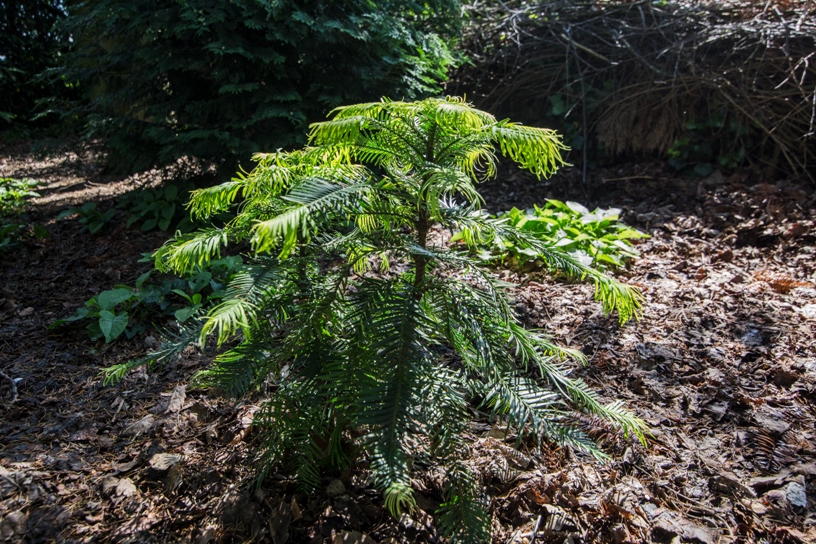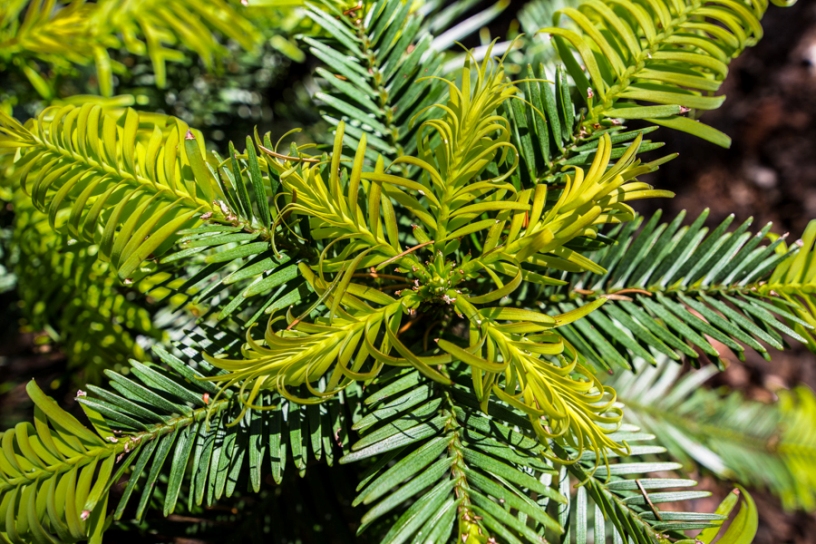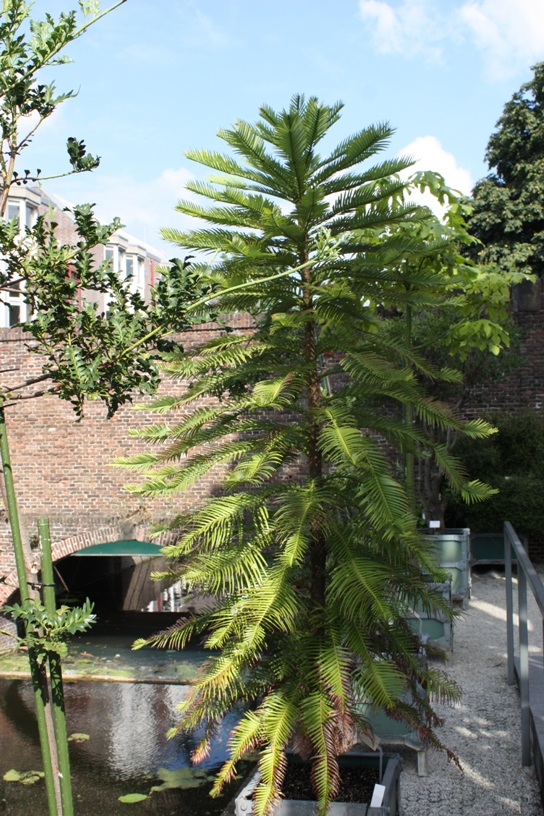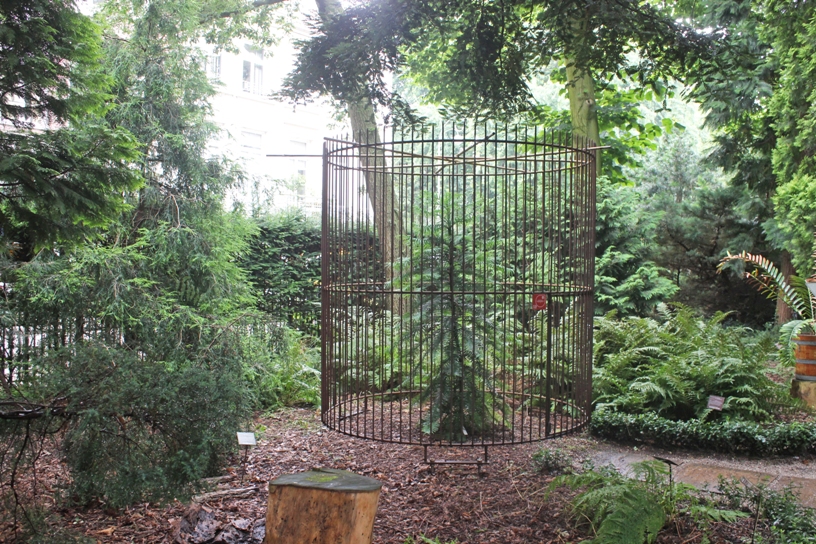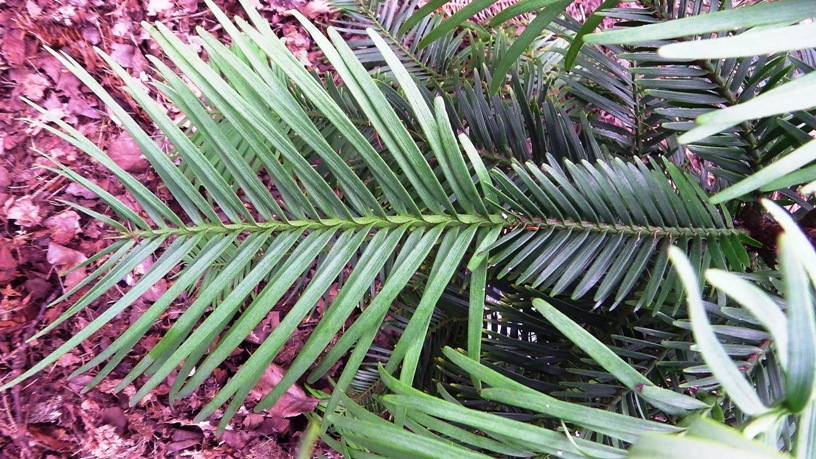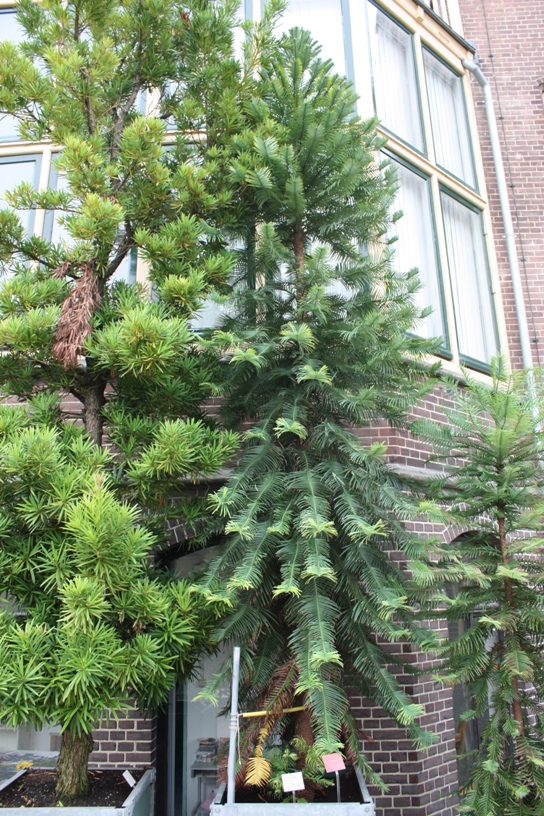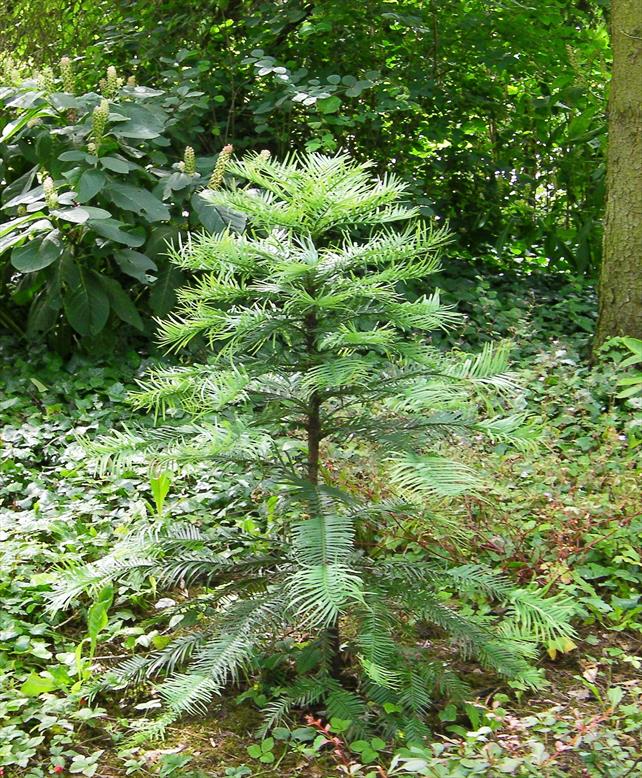Wollemi Pine
Wollemia nobilis
Monkey-puzzle family (Araucariaceae)
From before the dinosaurs
In 1994, ranger David Noble discovered the last remaining individuals of Wollemia nobilis in the Blue Mountains. They are growing in an inaccessible gorge 200 kilometers from Sydney. The canyon made of sandstone is deep and warm. It supports a temperate rainforest vegetation.
The wollemi pine belongs to a group of primitive conifers that evolved about 200 million years ago, i.e. before the heyday of the dinosaurs. The oldest tree, King Billy, is 40 meters tall and 1,000 years old.
The pockmarked bark of the mature trees is typical. The seedlings grow slowly. To protect these primitive conifers from extinction the Royal Botanic Gardens in Sydney put together a comprehensive breeding program.
Read more.... »Themes
Crown jewel in the Hortus Botanicus Amsterdam, Haren Botanic Garden, Leiden Botanic Garden and Blijdenstein Pinetum.
Part of the Dutch National Conifer Collection.
Fragrant; contains resin.
First found in 1994 in a remote region, the wollemi pine belongs to a group of primitive conifers that arose about 200 million years ago, long before the heyday of the dinosaurs.
In 1994 in the Blue Mountains just 200 km outside Sydney the last remaining specimens of the wollemi pine were found. Until this time this primitive conifer was only known from its fossil record.
Details
| Description: | Conifer, up to 35 m. |
|---|---|
| Distributions: | Australia: blue mountains |
| Habitat: | Subtropical conifer forests. |
| Year cycle: | Perennial (polycarpic decidous) |
| Hardiness: | 14 - 23 f (hardy - average winter) |
| Flower color: | Red, brown, green |
| Notes on flowers: | Male cones are reddish-brown, female cones mature from green to brown. |
| Fruiting period: | September - oktober |

